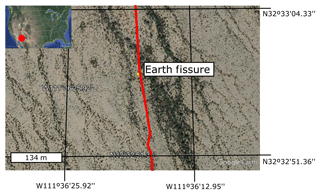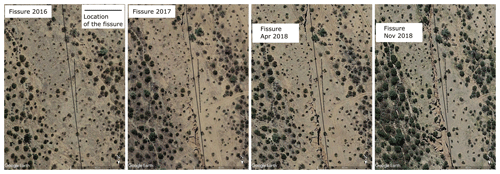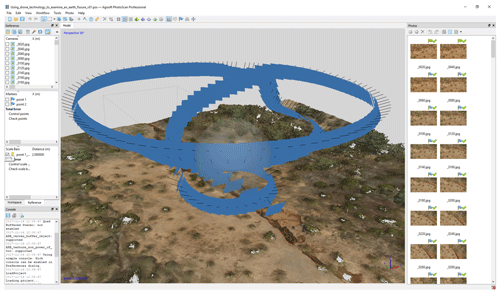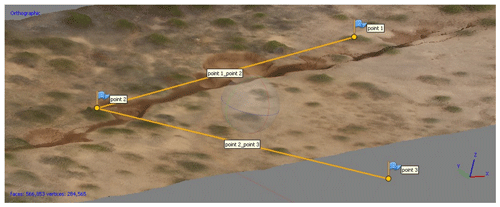Reconstruction of earth fissures 3-D from videos
Earth fissures are pervasive cracks that develop on valley floors as a consequence of land subsidence associated with extensive groundwater withdrawal. To capture geometrical, geological and geotechnical information of ground fissures is of paramount importance for their characterization. Recent advances in remote sensing techniques and the accessibility to remotely piloted aircraft systems (RPAS) as well as the evolution of onboard digital cameras enable the capture of digital photos and videos. Using digital photos along with the Structure from Motion (SfM) technique and following certain strategies, we can reconstruct a 3-D model of the earth fissures under study. This technique requires digital photos, but when a digital video is available, we can convert it into a set of frames and equally apply the procedure. Besides, the extraction of frames from a video assures a key condition for the SfM technique: the overlap between photos. The resulting 3-D model should be scaled and oriented using a rigid transformation matrix or even better including ground control points (GCP) into the captured photos or frames. The latter enables the geo-referencing of the point cloud and the correction of linear and non-linear deformations. In this work, the proposed methodology is illustrated through the application of SfM technique to a high-resolution video downloaded from YouTube (i.e. https://youtu.be/9xdAnftBKvY, last access: 20 February 2020). The video shows a mile-long earth fissure that appeared sometime between March 2014 and December 2014 near the Tator Hills (Arizona, USA) over Quaternary sediments. The Arizona Geological Survey captured these videos using an RPAS. The frames of the video were downloaded and extracted using a simple Matlab code. Then, we sub-sampled the frames and processed them using the software Agisoft Metashape Professional. Finally, we got metric data from Google Earth and generated a 3-D model. The quality of the 3-D model strongly depends on the quality of the photos and the GCP. However, this study shows the potential of this technique, instrumentation and data available on Internet for the development of 3-D point clouds and 3-D models for the detailed analysis of earth fissures.











